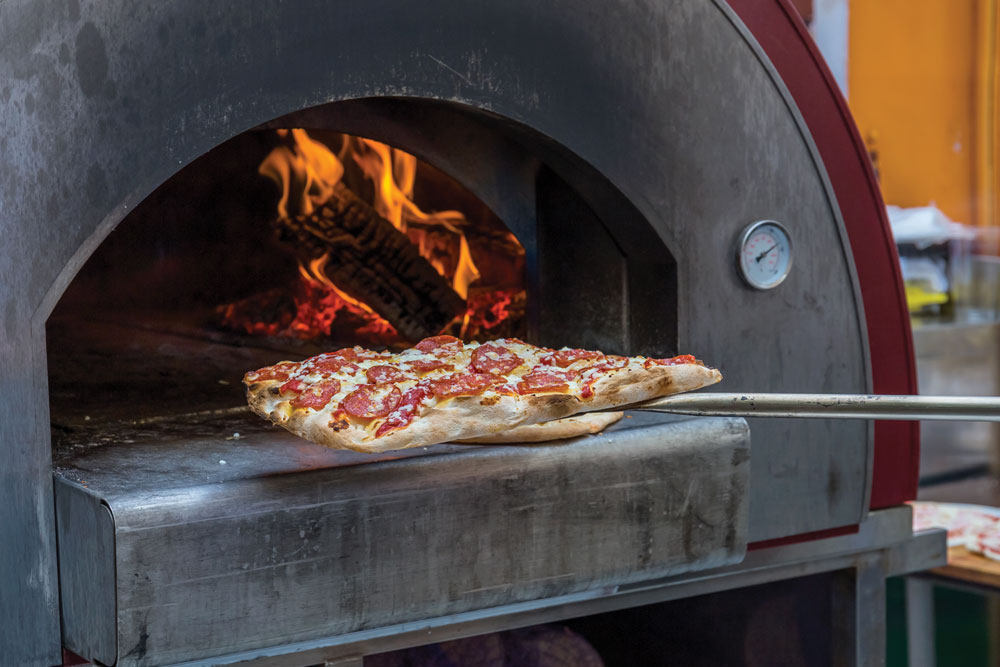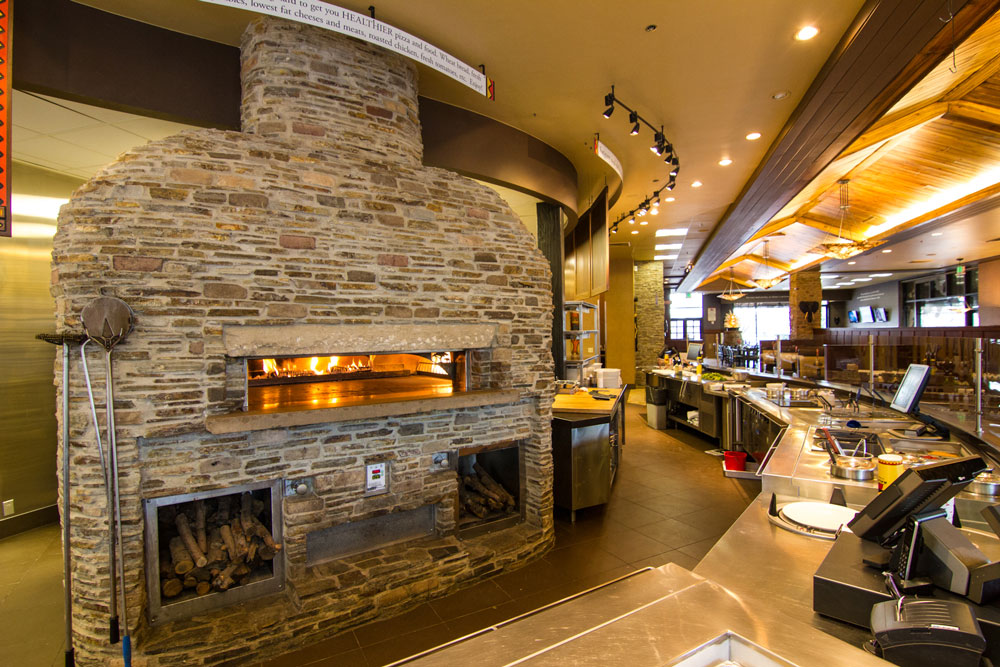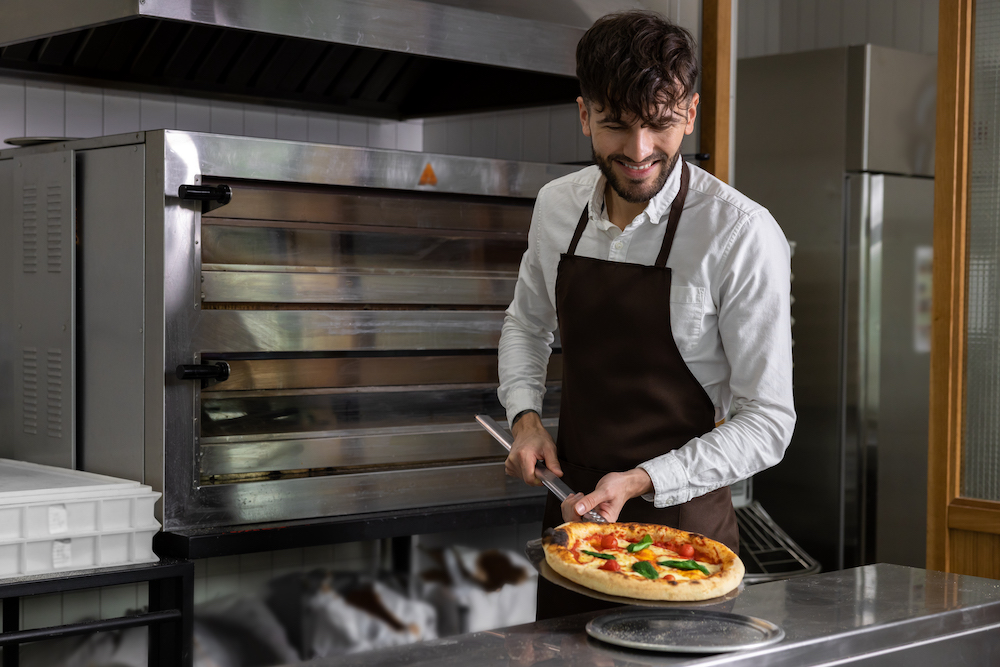From the beginning, pizza was meant to be cooked in a wood-fired oven—and there’s a good reason for that. According to Andrey Varlamov, a physicist who studies superconductivity at Italy’s National Research Council, wood-fired ovens (such as the one from Athens, Georgia-based Your Pie pictured above) provide the perfect pizza bake—a crispy bottom and perfectly cooked toppings—through the science of heat.
The key, Varlamov and fellow researchers concluded in a scientific paper published in 2018, is achieving the correct balance of heat flowing upward—via conduction—into the base of the pizza from the bricks below while using radiant heat to warm the toppings. In other words, sometimes the old ways really are better. In fact, today’s wood-burning ovens show little variation from the ancient Roman design: a round, domed chamber constructed of brick or stone, capable of housing an intense live flame and generating three types of heat: conductive heat from the brick oven floor, radiant heat from the dome that spreads throughout the chamber, and convection heat from the fire itself.
That’s a key advantage of wood-fired pizza ovens, but not the only one, of course. Here are a few more:
1 Wood-fired ovens, such as this model from Wood Stone Ovens at Warehouse 72 in Houston, are often eye-catching showpieces that lend an Old-World esthetic to any pizza operation. The restaurant’s decor can be customized to match the oven’s visual appeal, creating an enchanting dine-in experience.
2 A wood-fired oven’s cooking time and even heat distribution lock in the flavors of the toppings before they dry out while imparting that unique smoky taste. Malawi’s Pizza, headquartered in Provo, Utah, uses its wood-fired oven to create gourmet pies that also raise money for hungry children in Malawi, Africa.
3 Because wood-fired ovens can heat up to 900°F or hotter, they provide a speedy bake for faster service and turnaround. That’s key to success for Ali Haider, whose 786˚ restaurant in Sun Valley, California, has very limited seating.
4 Different types of wood create subtle changes in a pizza’s flavor profile, allowing you to experiment with signature recipes. Smokin’ Oak Wood-Fired Pizza, based in St. Petersburg, Florida, also uses its wood-burning oven as a teaching tool, explaining the benefits of a high-temperature, wood-fired bake on its website.
5 Oven tenders at Cane Rosso, an authentic Neapolitan pizzeria based in Dallas, know that wood-fired pizza is actually better for your health: The intense heat seals in the vitamins and nutrients naturally found in vegetable toppings.
6 A wood-fired pizza menu can set your restaurant apart from the same old same old. Katie Collier, owner of Katie’s Pizza & Pasta Osteria in St. Louis, serves artisanal pizzas like the Fig & Squash in a city better known for its Provel-topped pies and cracker-thin crusts.
7 Wood-fired ovens, like this Forno Bravo model at Sharrott Winery in Hammonton, New Jersey, also use gas as a heat source. They can be idled at 300˚ to 350˚ at night, then brought back up to baking temperature the next morning in just three hours.




















